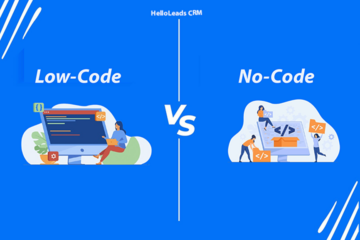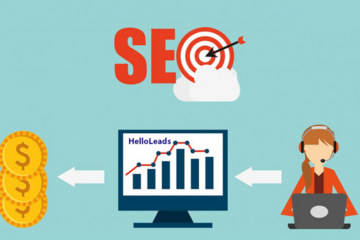
In the modern era of technology and rapid advancements, lead generation plays a crucial role in every business strategy. Given the ever-increasing competition, it is essential for businesses to discover innovative methods of attracting potential customers and successfully converting them into paying customers. This is where lead generation comes into play. By identifying and engaging with potential customers, you can build your customer base, increase brand awareness, and ultimately grow your revenue.
However, lead generation goes beyond merely casting a net and hoping for a few catches. It necessitates a strategic approach that encompasses understanding your target audience, creating valuable content, and optimizing your website and social media channels accordingly.
In this blog, we will guide you through the advantages of lead generation and offer practical strategies and best practices for generating leads. Whether you are a small business owner or a marketing professional, this comprehensive guide will equip you with the insights necessary to elevate your lead generation efforts to new heights. So, let’s dive in!
What is lead generation?

Lead generation is the process of identifying and attracting potential customers for your products or services. The ultimate goal of lead generation is to convert these potential customers into paying customers.
Top benefits of lead generation

Lead generation provides below benefits and outcomes:
Increases customer base: Lead generation helps you to increase your customer base by attracting new and potential customers. This helps to expand the reach of your business and increase your customer base.
Increases brand awareness: Lead generation helps to increase brand awareness by reaching to a large number of potential customers. Implementing these practices can assist in positioning your business as an industry leader and enhancing its credibility.
Better targeting: Lead generation empowers you to refine your marketing efforts by gaining a deeper understanding of the needs and interests of your target audience. This allows you to tailor your messaging and strategies more effectively, resulting in improved targeting and engagement.
Provide valuable insights: Lead generation provides valuable insights into the needs and interests of potential customers. This information can be used to improve the products & services offered by your business and overall customer experience.
Strategies for lead generation
Your business can leverage various strategies to generate leads, encompassing both online and offline methods. By combining these approaches, you can maximize your reach and effectiveness in capturing potential leads.
Online lead generation strategies:

Twitter lead generation:
Twitter ‘lead gen cards’ are a type of Twitter advertising that allows you to collect information from potential leads directly within a tweet. When a user clicks on the call-to-action (CTA) button on a ‘lead gen card’, their information such as name, email address, and Twitter handle will be automatically populated. The user simply has to click “Submit” to send their information to the advertiser. To create a ‘lead gen card’, you need to have a Twitter ads account and create an ad campaign with a lead gen objective.
Facebook lead generation:
Facebook allows you to use paid advertising to generate leads from your website or Facebook page. You can use the Facebook Pixel to track visitors and retarget them with relevant ads. You can also include clickable links on your Facebook page that redirect visitors to your website. Creating compelling and engaging content is crucial in enticing visitors to click and interact with your brand. By providing valuable and captivating content, you can capture the attention of your audience, encourage them to take action, and establish a meaningful connection with them. You can also create lead generation forms within Facebook, similar to Twitter lead gen cards, to collect information from potential leads.
LinkedIn lead generation:
LinkedIn is a valuable platform for B2B lead generation. You can use lead gen forms to collect information from potential leads directly within a LinkedIn post. When a user clicks on the CTA button, their LinkedIn profile information such as employer and job title will be automatically populated. This makes it easier for you to gather information about a lead and helps to streamline the lead generation process.
Search engine lead generation:
Search engine lead generation entails optimizing your website and content to achieve higher rankings in search engines such as Google. This can be done through search engine optimization (SEO) techniques such as keyword research, content optimization, and building backlinks. You can also use pay-per-click (PPC) advertising on search engines to target specific keywords and drive traffic to your website. The goal is to increase your website’s visibility and attract potential leads to your website.
These examples represent just a fraction of the numerous methods available for lead generation through social media and other online platforms. The most suitable approach for your business will depend on factors such as your target audience, marketing goals, and industry dynamics. It is essential to assess and tailor your lead generation strategies accordingly to maximize their effectiveness and achieve optimal results.
Offline lead generation strategies:
Networking: Building relationships and connecting with potential customers through industry events, conferences, and other networking opportunities.
Trade Shows: Attending and exhibiting at trade shows can help businesses to connect with potential customers and generate leads.
Referral Marketing: Encouraging current customers to refer friends and business contacts can help to generate new leads.
Loyalty programs: Loyalty programs incentivize customers to share their information in exchange for rewards or benefits. By offering rewards for repeat visits or purchases, you can foster customer loyalty and encourage ongoing engagement with your business. This not only strengthens the relationship with existing customers but also increases the likelihood of them becoming loyal, repeat customers over time.
Best practices for lead generation:
Define your target audience
Understanding your target audience is crucial for effective lead generation. This includes understanding their demographics, interests, pain points, and what motivates them to make a purchase. This information will inform your lead generation strategy and help you create content and offers that are relevant and appealing to your target audience.
Offer valuable content
Offering valuable content such as ebooks, whitepapers, webinars, or other resources can help attract potential leads and build trust. Delivering educational or informative content can position your company as an authority in your industry, increasing the likelihood that potential leads will engage with your brand. By offering valuable insights, expert advice, or educational resources, you establish credibility and demonstrate your expertise, thereby attracting the attention and trust of your target audience. This can lead to increased engagement, higher conversion rates, and a stronger reputation as a knowledgeable industry leader.
Optimize your website
Your website should be optimized for lead generation. This includes having clear call-to-action (CTAs), lead capture forms, and landing pages that are optimized for conversions. Your website should also be mobile-friendly, as more and more people are accessing the internet on mobile devices.
Utilize social media
Social media is a powerful tool for lead generation. Platforms like Twitter, Facebook, LinkedIn, and Instagram can help you reach your target audience, promote content and offers, and engage with potential leads. Be sure to use platform-specific lead generation tools like Twitter ‘lead gen cards’ and LinkedIn ‘lead gen forms’ to capture lead information.
Test and measure
Continuously testing and measuring your lead generation efforts is vital for achieving success. This includes testing various Email / SMS campaigns to see what resonates with your target audience. Use customer relationship management (CRM) software like HelloLeads CRM and analytics platforms to track key metrics such as website traffic, lead conversions, and customer behaviour. Use this data to make informed decisions about your lead generation strategy.
In conclusion, it is crucial to recognize that the lead generation process is continuous and demands consistent effort. Embrace the opportunity to experiment with various strategies and tactics to determine what yields the best results for your business. Above all, prioritize the needs and preferences of your target audience, as understanding and addressing their requirements will greatly enhance the effectiveness of your lead generation efforts. By staying proactive, adaptive, and customer-centric, you can continuously refine your approach and achieve sustainable success in generating and converting leads.
Remember, the goal of lead generation isn’t just to generate a large volume of leads, but to attract high-quality leads who have a genuine interest in what your business has to offer. By staying focused on your target audience and providing them with valuable content and experiences, you can build a strong pipeline of qualified leads that can ultimately lead to increased sales and business growth. So, continuously refining your lead generation strategy, staying informed about the latest trends and technologies, and striving to deliver exceptional value to your customers are all essential components of a successful approach.
By remaining adaptable and responsive to changes in the market, consumer behaviour, and technology, you can stay ahead of the competition and consistently provide outstanding experiences that attract and retain valuable leads. Remember, the journey of lead generation is an ongoing process, and by embracing a growth mindset, you can continually improve and achieve long-term success.
Related articles that you might be interested
- Maximizing Your Sales Potential: A Deep Dive into Lead Management Process
- Unlocking Sales Success Using Lead Management KPIs
- How a CRM can Help Your Business to Achieve its Top 5 Goals












